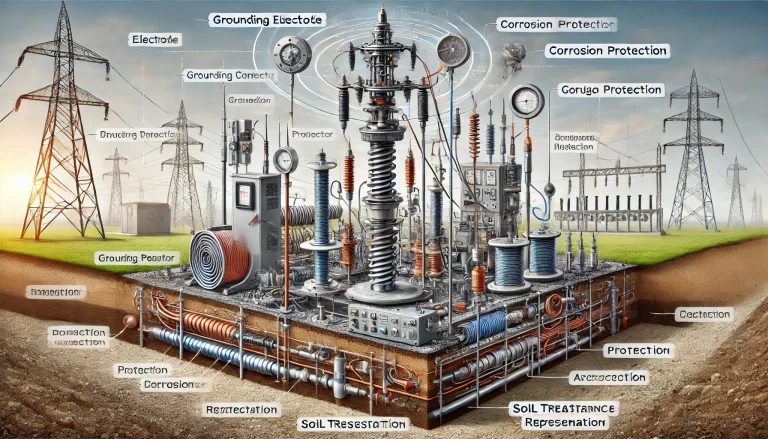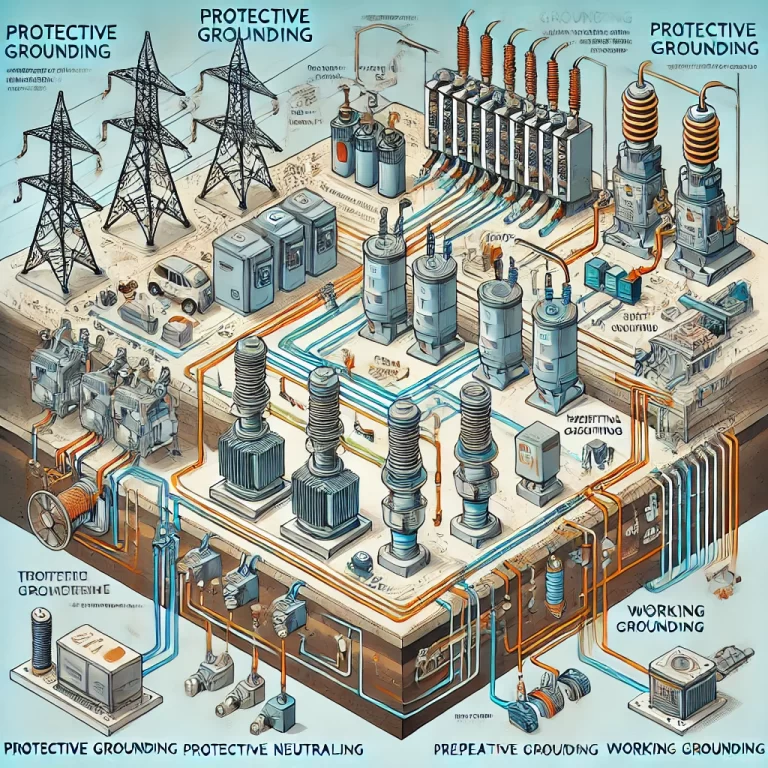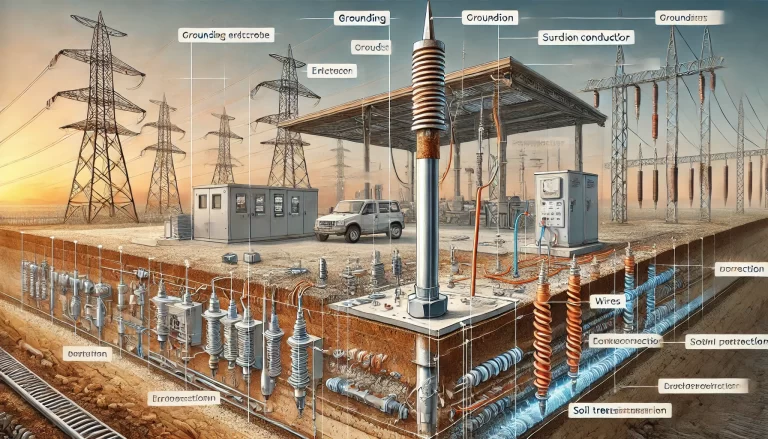Grounding systems are a critical component of electrical engineering, ensuring the safety and reliability of electrical systems. Proper grounding minimizes the risks of electric shock, equipment damage, and electrical fires. In this article, we will outline the key grounding standards and requirements, including grounding resistance specifications, installation guidelines, material selection, and construction and inspection processes.

Grounding Resistance Requirements
The grounding resistance of electrical systems must be within certain limits to ensure safety. The following are the key grounding resistance requirements for different components:
- Large Grounding Short Circuit Current Systems: The grounding resistance should not exceed 0.5 ohms. This is crucial for systems with high fault currents, where low resistance ensures efficient dissipation of energy.
- Transformers and Generators (over 100 kVA): The grounding resistance should not exceed 4 ohms. This is important to prevent excessive voltage buildup and ensure that fault currents are safely redirected to the earth.
- Valve-type Lightning Arresters: The grounding resistance should not exceed 5 ohms. Proper grounding of lightning arresters protects the system from lightning-induced surges.
- Small Grounding Current Systems, Transformers and Generators (≤100 kVA): The grounding resistance should not exceed 10 ohms. Ensuring proper grounding for these smaller systems still plays a vital role in safety and equipment protection.
- Low-voltage Line Metal Poles, Cement Poles, and Chimneys: The grounding resistance should not exceed 30 ohms. This ensures that any stray currents or faults are effectively dissipated, reducing the risk of electrical hazards.

Grounding System Installation Requirements
The installation of grounding systems must follow strict guidelines to ensure that the system is effective and reliable. The following are key installation requirements:
- Grounding Conductors: Generally, 40mm × 4mm galvanized flat steel should be used for grounding conductors. Galvanized steel is preferred for its excellent conductivity and corrosion resistance, ensuring a long-lasting grounding system.
- Grounding Electrodes: Grounding electrodes should be made of galvanized steel pipes or angle steel. The steel pipe should have a diameter of 50mm, a wall thickness of at least 3.5mm, and a length of 2-3 meters. The angle steel should be 50mm × 50mm × 5mm. These dimensions ensure sufficient surface area for current dissipation.
- Installation Height: The top of the grounding electrode should be placed 0.5-0.8 meters above the ground level to avoid interference from frozen soil. The number of electrodes depends on the surrounding soil resistivity, but at least two electrodes should be used, spaced 3-5 meters apart.
- Clearance Requirements: The grounding electrode should be installed at least 1.5 meters away from buildings and at least 3 meters away from independent lightning rod grounding systems. This distance ensures that the grounding system operates independently and does not interfere with other systems.
- Connection of Grounding Conductor and Electrode: The connection between the grounding conductor and the grounding electrode should be made using a lapped weld. This ensures a solid, low-resistance connection between the components of the grounding system.
Grounding Material Selection
Except for temporary grounding systems, all permanent grounding systems must use materials that are durable and resistant to corrosion. The materials selected should meet the following standards:
- Galvanization: Steel components used in the grounding system must be hot-dip galvanized to prevent corrosion and extend the life of the system. This includes both horizontal and vertical components, such as round steel, flat steel, angle steel, and steel pipes.
- Quality Control: All materials must meet national standards, and the construction team should verify that the materials have appropriate certification before installation.

Grounding System Construction and Inspection
Proper installation and regular inspection of grounding systems are essential to maintain their effectiveness. The following points should be considered:
- Installation: The grounding system installation should be carried out by the construction team in accordance with the approved design specifications. The engineering and project management teams must assign dedicated personnel to oversee the installation and ensure compliance with safety and quality standards.
- Equipment and Materials: All equipment and materials used for grounding system installation must comply with national standards and should have valid certificates. Any substandard materials should be rejected to ensure the system’s performance.
- Inspection: After installation, the grounding system should be tested to verify that the grounding resistance is within the required limits. Any grounding system that does not meet the standards should be reworked or replaced. Regular inspection and testing are required to ensure the continued safety and functionality of the system.
Methods to Reduce Soil Resistivity
Soil resistivity is a key factor affecting the performance of grounding systems. If the soil resistivity is too high, the effectiveness of the grounding system may be compromised, leading to higher grounding resistance. The following methods can help reduce soil resistivity:
- Pre-installation Soil Testing: Before installing the grounding system, the resistivity of the soil around the grounding electrodes should be measured. If the soil resistivity is too high, corrective measures should be taken, such as improving the soil’s moisture content or adding conductive materials like salts or chemicals to lower the resistivity.
- Improvement Measures: In areas with high resistivity, consider using specialized backfill materials around the grounding electrodes, such as bentonite or other conductive compounds, to improve the grounding performance.

Conclusion
Proper grounding is vital for the safety and reliability of electrical systems. By adhering to established standards for grounding resistance, installation practices, and material selection, engineers can ensure that electrical systems are protected from faults, lightning strikes, and other electrical hazards. Ongoing maintenance and regular inspection are essential to keep grounding systems in optimal condition and reduce the risks associated with electrical failures. Following these guidelines helps ensure a secure and reliable power distribution network, protecting both people and equipment.
